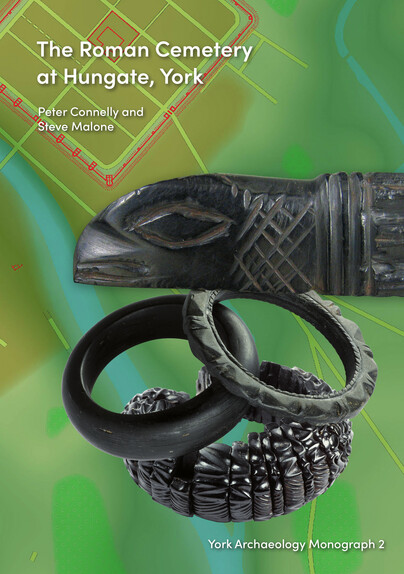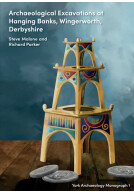Google Books previews are unavailable because you have chosen to turn off third party cookies for enhanced content. Visit our cookies page to review your cookie settings.
The Roman Cemetery at Hungate, York (Paperback)
Imprint: The York Archaeological Trust
Series: York Archaeology Monograph
Pages: 382
ISBN: 9781874454786
Published: 16th February 2024
Script Academic & Professional
Series: York Archaeology Monograph
Pages: 382
ISBN: 9781874454786
Published: 16th February 2024
Script Academic & Professional
You'll be £20.00 closer to your next £10.00 credit when you purchase The Roman Cemetery at Hungate, York. What's this?
+£4.99 UK Delivery or free UK delivery if order is over £40
(click here for international delivery rates)
Need a currency converter? Check XE.com for live rates
(click here for international delivery rates)
Need a currency converter? Check XE.com for live rates
The Hungate archaeological project was undertaken by York Archaeology, then known as York Archaeological Trust, from 2006 to 2011 on behalf of Hungate (York) Regeneration Ltd. It comprised a series of evaluations, excavations and watching briefs across the regeneration area, incorporating one of the largest ever urban excavations in York.
The Block H excavation area lay on the south-east side of Stonebow, between Hungate and Dundas Street, and revealed a deeply-stratified sequence including a Roman cemetery, Viking Age buildings, a medieval city dump and later urban development within an area that had become regarded as a slum by the start of the 20th century. This volume reports on the Roman cemetery and earlier landscape use, including a full catalogue of the cremations and inhumations and associated burial goods together with specialist analysis of the human remains, artefacts and ecofacts recovered.
With at least 120 graves present, the cemetery at Hungate is one of the largest Roman cemeteries of York to have been subjected to a modern archaeological excavation. It began life as a cremation cemetery in the mid to late 2nd century AD with gradual development and expansion as an inhumation cemetery over the following 200+ years. Zonation of the cemetery was evident in distinct groupings on differing alignments with a potentially late 4th century horizon in the north of the cemetery space, somewhat less coherent in layout and alignment.
Extended, supine, and coffined inhumation was the norm, but a range of other rites were also represented, including one richly furnished lead-coffined burial. Grave goods/furnishings were relatively common, more common than at many cemeteries of this date with pottery, glass vessels, body adornment and footwear all included as deliberate deposits. Several of the burials were quite richly furnished, having multiple items in different materials (jet, copper alloy, pottery, glass). One burial contained a jet baton of unique form, which had been placed in the hand of an older juvenile. A further individual furnished with jet necklaces and bangles shows remarkable similarities with the ‘gallus’ from Catterick, interpreted there as a transvestite priest of the cult of Cybele.
Customers who bought this title also bought...
Other titles in the series...
Other titles in The York Archaeological Trust...












